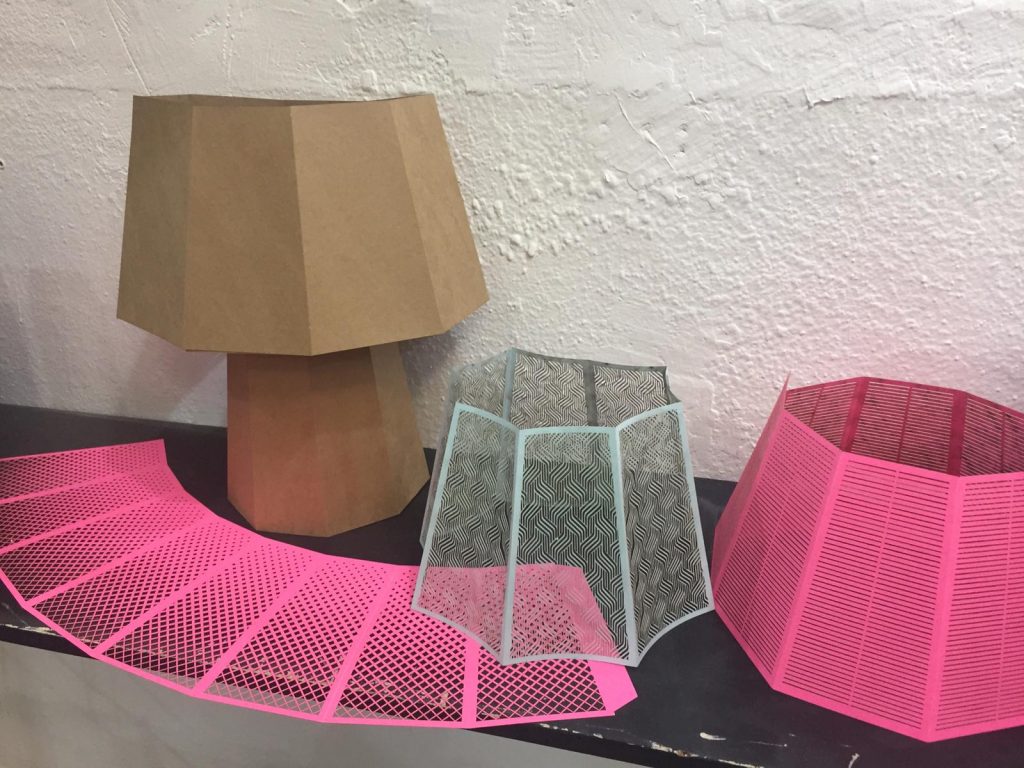Designing Household Items Using Recycled Materials in Barcelona

The Challenge
Provide an open source design that addressed populations living in energy poverty. Contribute to Fab Lab BCN’s research efforts in building sustainable solutions.
My Contributions
I prototyped, tested, and designed an open-source lamp. My lamp used minimal resources with simple assembly requirements. I consulted with clients to create products using eco-conscious manufacturing techniques.
Our Solution
In collaboration with a global team, we created household items using upcycled materials. We showcased our designs with the community in Barcelona, providing our open source design to the world at large.
Shedding Light on Resource Constrained Communities
My work at Fab Lab BCN was centered around frugal innovation, design thinking and digital technologies. How could modern manufacturing technologies address the 13% of the global population without power?
I worked with other researchers and designers towards building a body of work that reframed electric poverty. In an attempt to contribute a solution to this global issue, I created a laser cut cardstock lamp.
I worked with other researchers and designers towards building a body of work that reframed electric poverty. In an attempt to contribute a solution to this global issue, I created a laser cut cardstock lamp.


Researching to Reframe Cities
At present, cities are structured like linear trash machines. Externally produced goods are shipped in to a city. Those goods are unloaded, and consumed by citizens.
Those citizens exude waste, which then heads to the landfill, an incinerator or outsourced to another country.
Through localizing manufacturing Fab Lab’s can reshape how cities source and use materials.
This new urban model can transform a cities primary exports in the form of data. With this mindset, we set out to build our lamps.

940 million (13% of the world) do not have access to electricity.
Iterating Through Existing Designs
We first produced Milo McGlaughlin’s Lamp_01 with recycled high-density polyethylene. Through fabricating this design we documented lead times, material availability, and tools.
Through creation of other designs we were able to question what materials we could use for something more simple. Lamp_01 took about two days to build, with 3d printer
Through creation of other designs we were able to question what materials we could use for something more simple. Lamp_01 took about two days to build, with 3d printer
By 2054 70% of us will live in cities. This rapid urbanization presents a grand challenge as well as a system-changing opportunity.

Lamp Designs
Initial Ideas
We looked to places like The Philippines, Benin, and Tajikistan when considering material availability.
Our design required two primary materials: cardstock and tape.
The tool necessary to complete the cuts was a laser cutter. Users could customize the shade design
Those creating our lamp would need to source a light bulb, and corded socket.
The tool necessary to complete the cuts was a laser cutter. Users could customize the shade design
Those creating our lamp would need to source a light bulb, and corded socket.

User Testing and Adoption
I was able to witness users interacting with my design in real time at Fab Lab’s open house.
I sat and observed what people gravitated towards first. Mostly everyone wanted a lampshade of their own. I learned there were a few kinks in the instruction process that could be improved upon.
Overall the lamp was simple to assemble, widely accessible, and a hot ticket item of the night. I gave away 17 lamps, and collected a list of those wanting a lamp of their own.
I sat and observed what people gravitated towards first. Mostly everyone wanted a lampshade of their own. I learned there were a few kinks in the instruction process that could be improved upon.
Overall the lamp was simple to assemble, widely accessible, and a hot ticket item of the night. I gave away 17 lamps, and collected a list of those wanting a lamp of their own.
Submission
Our finalized design was uploaded to the open source Distributed Design Market Platform, and Thingiverse. As of January 2021, The lamp designs have been downloaded more than eight hundred times by makers all over the world.

